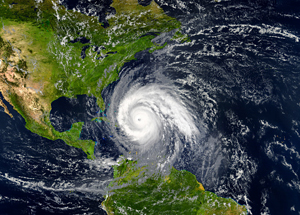
"Field Notes" is a regular AACRAO Connect column covering practical and philosophical issues facing admissions and registrar professionals. The columns are authored by various AACRAO members. If you have an idea for a column and would like to contribute, please send an email to the editor at connect@aacrao.org.
by Sherry Wells, Assistant Vice Provost, Lamar University
Whether it’s a campus shooting or a natural disaster such as hurricanes, flood, or fire, effective communication across campus can literally mean life or death. No singular mode of communication is appropriate in all situations, but below are some general guidelines and examples.
Parallel and tier
To be effective communicate, Schildkraut, McKenna, & Elsass (2016) recommend a crisis communications system include:
Parallel messages, using two or more modes of communication, and
Tiered messages, indicating to the recipient the level of urgency of the message.
For instance, in a tornado or an active shooter situation, an audible siren or announcement followed by a text message to mobile devices would be more appropriate than sending an e-mail or posting on a website since the communication has immediate urgency. Using multimodal communications allows for flexibility and responsiveness to the unique circumstances of a given disaster.
As our campus learned in 2017, a nimble communications plan can greatly help a campus navigate a crisis.
Case study: Hurricane Harvey
Being near the gulf coast, our university officials always keep an eye on any potential tropical storm or hurricane activity that is expected to enter the gulf – even if the prediction is for it to go far east or far west of our campus.
In August 2017, as we were gearing up for fall semester, Hurricane Harvey came ashore along the Texas coast -- far west of us -- and we were expecting maybe a little rain. Then Harvey decided to move back out into the Gulf of Mexico and head east. At this point Harvey was a tropical storm and our forecast changed to rain and a little wind.
Since Harvey was scheduled to hit our area on residence hall move-in weekend, the decision was made to welcome students who wanted to avoid the rain to campus a couple of days early. This was communicated in an e-mail, the university website, and on social media. Quite a few students accepted the offer and campus was buzzing with excited freshmen and lots of activity. The consensus was that moving up the move-in date was a great plan and deemed a success.
A change of plans
There wasn’t much time for celebrating, however, because Harvey came ashore again. This time we were in the bullseye. Since Harvey had weakened there was not much alarm or calls to evacuate. Local news suggested people secure anything outside that might be blown away with high winds but otherwise carry on as normal.
It started to rain heavily, as expected, but the rain didn’t stop. Instead of continuing north, Harvey sat over our region for days with continuous heavy rain. Parts of our county received over sixty inches of rain in four days. Take a second and let that sink in (no pun intended): SIXTY inches of rain fell on the same area in ninety-six hours. Roads began to flood so the university postponed the start of the fall semester. We sent out messages for students not to attempt to come to campus -- except we had allowed hundreds of students to move into the residence halls early. This meant we were responsible for feeding, entertaining, and keeping safe students who otherwise would be at home with their families.
As more rain fell, not only the streets were flooded but homes and businesses began to flood. Campus became an island with all routes in and out impassable. For the first time ever the city water pump station was overcome by flood waters and the pumps failed. This resulted in the entire city (including campus) being without water for days.
Campus officials somehow kept the resident hall students safe, fed, and entertained while continuing to give updates through various communication channels to faculty, staff, parents, and students off campus. The university executed the disaster preparedness plan well, even though a flood of epic proportions was not exactly in the plan.
Reference
Schildkraut, J., McKenna, J. M., & Elsass, H. J. (2016). Understanding crisis communications: Examining students’ perceptions about campus notification systems. Security Journal, 30(2), 605–620.